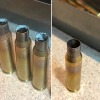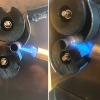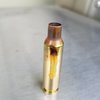riverfoxtwo
Member
- Joined
- Oct 25, 2016
- Messages
- 3
I'm new to rifle reloading and this is probably a dumb question but I have not seen anything concerning at what point in the reloading process you anneal. Is it after you clean and resize?
The last question is, "Do I anneal before resizing, or after"? Theoretically annealing does not change the diameter of the case neck. In practice, it may or may not, depending on how much the metal is stressed. Therefore, you should always anneal before resizing.
Great info, thanks for the link to it!Actually Ken Light, manufacturer of my BC1000 recommends annealing BEFORE resizing in his instructions:
A pretty good article about annealing:
http://www.6mmbr.com/annealing.html
Most definitely IMO.I think heating till the brass glows may be getting them too hot.
I use 750 deg Tempilaq on the inside of the mouth. I use scrap brass so I don’t mess up my good cases.
Once the Tempilaq melts you know you’ve reached the desired temp.
I think heating till the brass glows may be getting them too hot. Its an often debated topic

Would you mind sharing how you determine when melting occurs?.



Was this helpful? If not let me know and I’ll take another crack at it


Blackening in a torch annealer is a setting issue. Either you’re running a carburizing flame, or you’re not near enough the inner cone of the flame with the brass.
